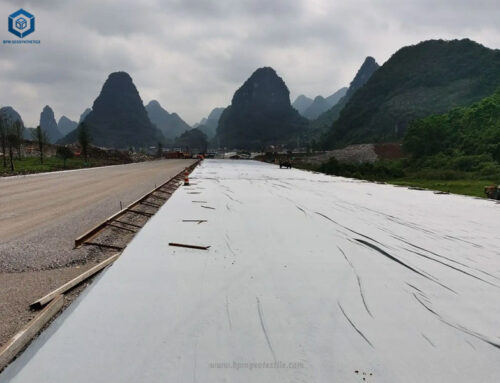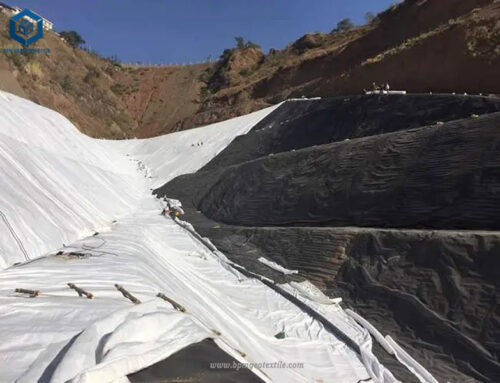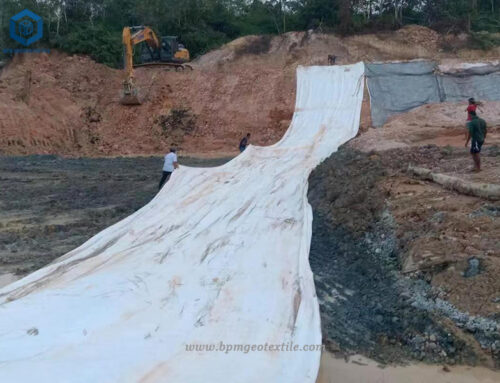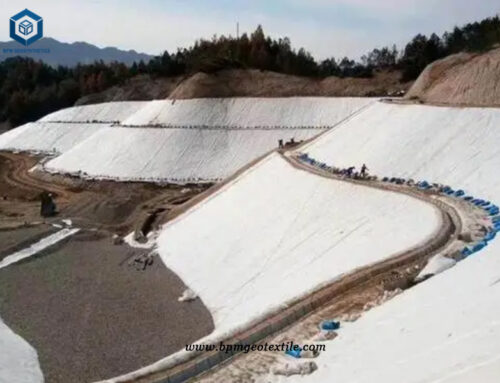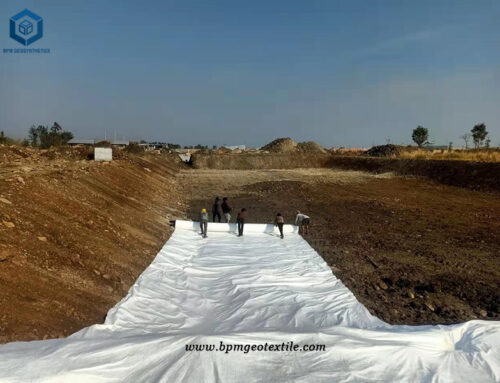PP nonwoven geocloth is manufactured from polypropylene fabrics through compact,needle punched and rolling processes. PP non woven geocoth provides the excellent strength and hydraulic characteristics necessary in ground stabilization, drainage, and erosion control applications.
PP non woven geotextiles is among the most versatile types of geotextiles. They are available in many weights from 120g to 1000g. The pp non woven geocloth has good resistance to aging, acid and alkali corrosion, moisture and chemical attack, high elongation characteristics, etc, it also has three-dimensional uniformly distributed physical properties in all directions, so it is the ideal geotechnical product for separation and protection applications.
BPM customer in Malaysia won a tender for palm oil waste pond construction project. Malaysia is famous for its palm oil production, so the oil rubbish give rise to a lot of pollution problem.The pond is built to contain the waste substances. The pp non woven geocloth is used combined with geomembrane to form a solid and tight waterproof base in the waste pond bottom. PP nonwoven geotextile fabric is used underlying the geomembrane protect the geomembrane from improper handling and puncture. So the geotextile performs the separation and separation function. The customer bought about PP non woven geotextile 200 gsm in 50,000 sqm together with 50,000 sqm of 1.5mm geomembrane from BPM.
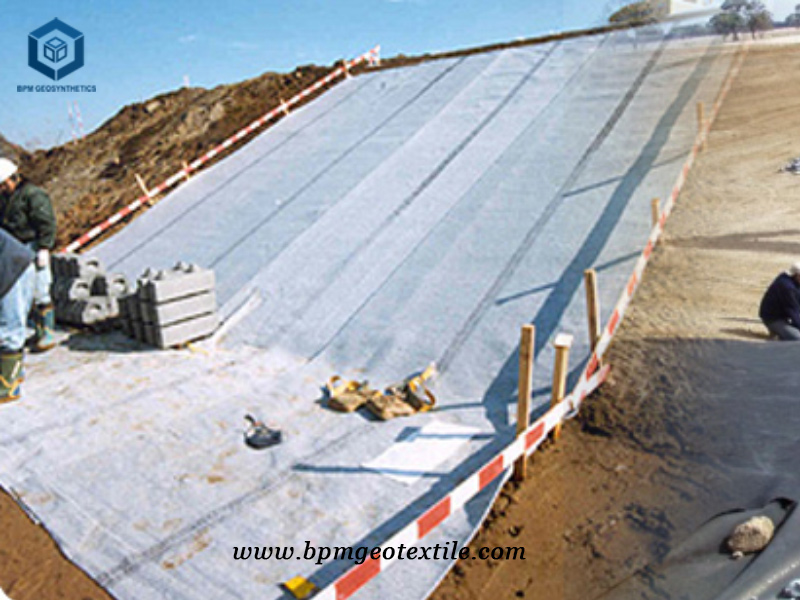
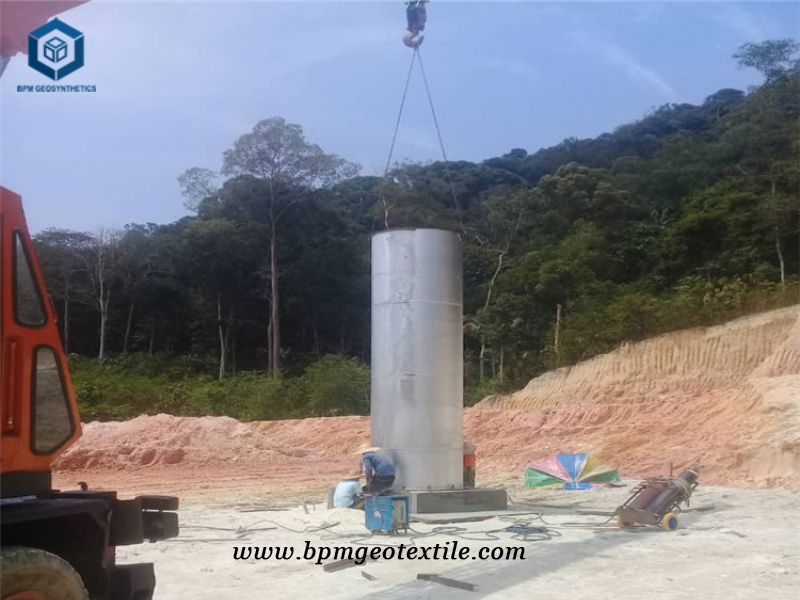
Below you find the general installation instructions for the geocloth fabrics. Installation requirements and methods may vary depending on the specification or plans of your location.
STEP 1: Prepare the install area. Standard preparation involves a process of removing stumps, stones or sharp objects that may be able to penetrate the area. For roadways, vegetation, roots, weeds and topsoil may also need to be removed.
STEP 2: Smooth and level the location. If there is especially soft soil in the area, soil may need to be removed and/or replaced with a higher grade material.
STEP 3: Place the geotextile fabric in the installation area. Fabric should be laid out according to specific plans or site recommendations. Fabric should be stretched until it is as flat and as tight as possible. Each fabric should be overlapped according to site instructions. If no instructions exist, a minimum of 12’’ to 18’’ is recommended.
STEP 4: Secure the fabric with staples, pins, soil or other heavy materials. Fabric should be secured along the edges and then again on overlapping portions of material.
STEP 5: Place aggregate and/or other backfill on top of the fabric. Aggregate should be backfilled as required for your project. Aggregate lifts should be at least 6’’ thick. Increased thickness may be required for softer subgrade.
Specifications of PP Non Woven Geocloth for Palm Oil Waste Pond Project in Malaysia
- Product Name – PP Nonwoven GeoclothFabric Rolls
- Roll size – 5.9m*100m
- Quantity – 50,000 square meters
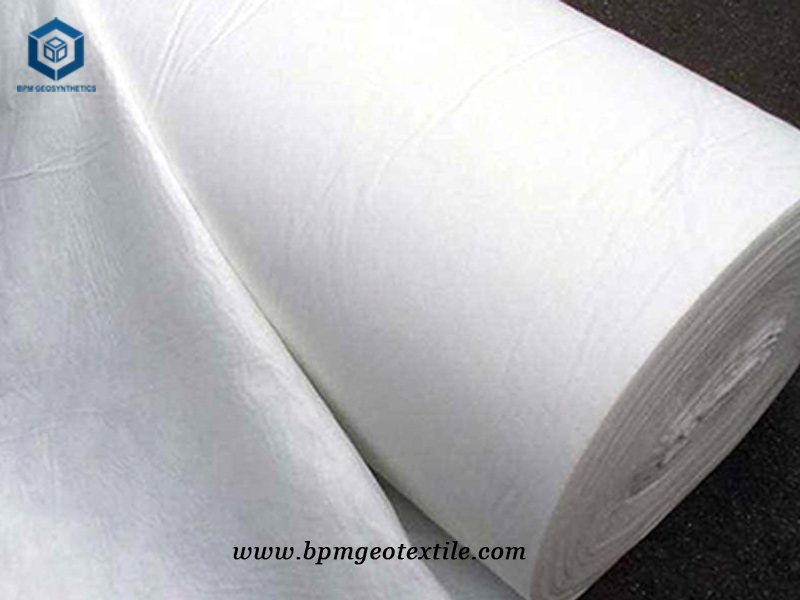
About BPM
BPM manufactures and wholesales many types of effective and states of the art geotextile, geomembrane, and other geosynthetics to over 36 countries. BPM geosynthetic products are widely used across a variety of industries including waste containment, water containment, aquaculture, industrial project, energy project and mining projects, etc. BPM main customers are from Australia, France, Sweden, UK, Hungary, New Zealand, Poland, Mexico, Ecuador, Brazil, Pakistan, Bangladesh, Thailand, Vietnam, Malaysia, Indonesia, Singapore, Philippines, Sri Lanka, India, UAE, Saudi Arabia, Qatar, Kenya, etc.
BPM is not only manufacturing best quality geosynthetic products but also providing professional design and installation service. OEM, ODM, custom development and fabrication are also available. If you have any questions or inquiries, please fill and submit the following form, we will reply as soon as possible.

